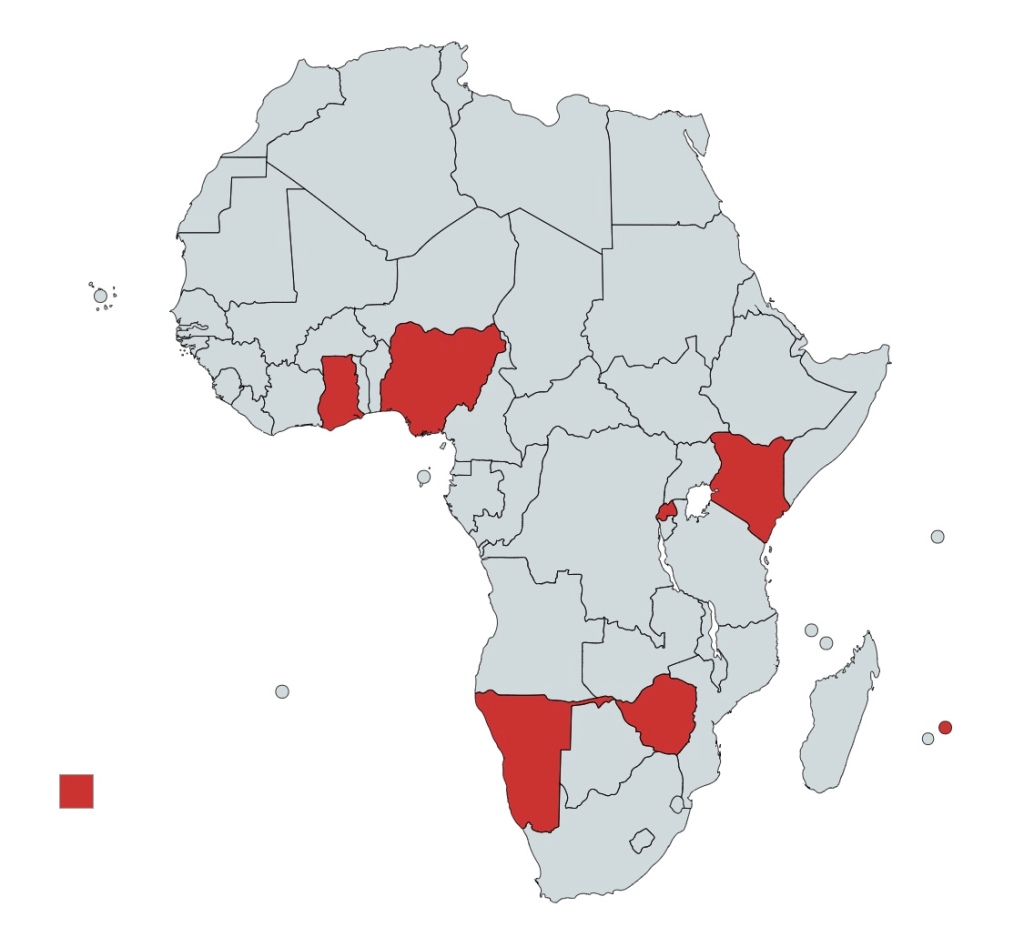
My dad used to have a penpal in Zimbabwe. He lived in the second biggest city of Bulawayo. Every letter was greeted with expectation & joy as you could go weeks with no contact, but then get 3 letters in a week due to him running out of space on the fold out airmail letters he had to use. These were a joy in their own right as they were embossed with safari animals or exotic plants. I’m sure in one of the box files in dads old study he has probably kept every single letter, I just haven’t discovered the box yet!
Delta Beverages – Lion
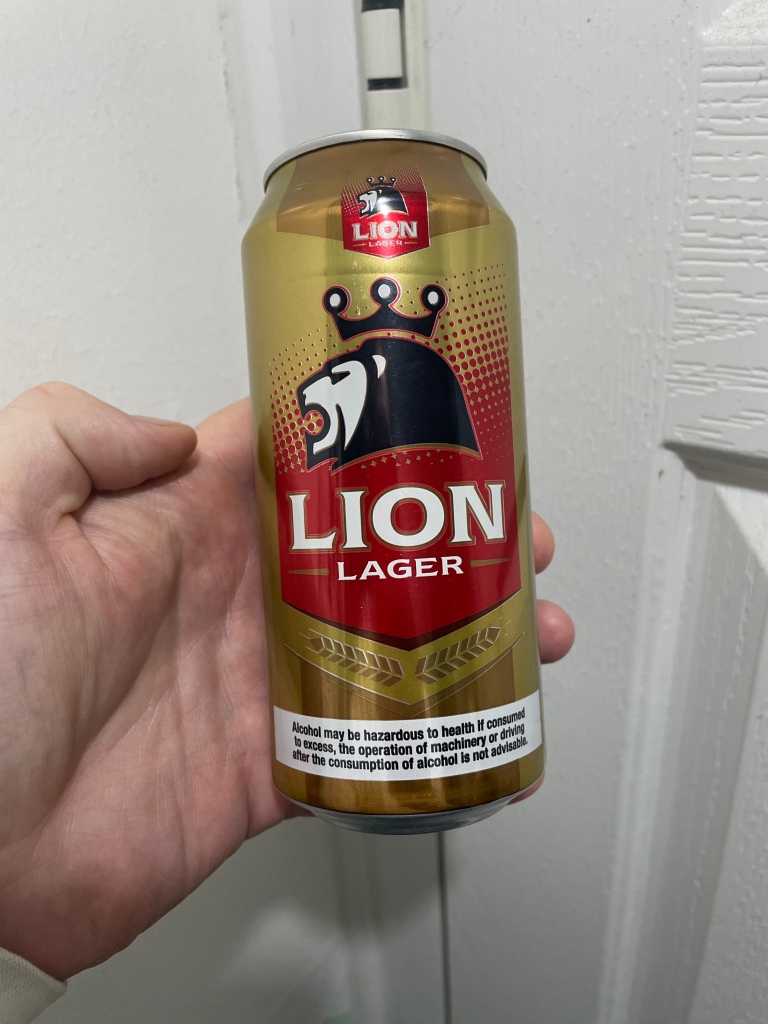
This 5%, 440ml can cost just £1 from Angellic Foods in Wolverhampton.

Well I didn’t expect this beer to be so flavourful. There is a sweet mellow undertone but a wonderful juicy orange flavour. The beer sings with the senses of Africa. It’s strange but as I sit here on the sofa, if I close my eyes I can picture myself in the African bush, watching elephants & giraffes walk past. The sun beating down, with just this beer to quench my thirst. Yes, I will probably suffer from dehydration and sun stroke tomorrow, but right now I can enjoy the moment and watch the world go by. Ok, so I was dreaming but you get the idea! Carbonisation on this beer is quite low, which leads to a poor level of head retention. This though doesn’t detract from this being a lovely beer. The deep yellow, almost golden colour gives it that real appealing nature that makes you go back for more.
The brewery is based in Harare. Harare is the capital of Zimbabwe. On the edge of landscaped Harare Gardens, the National Gallery of Zimbabwe has a large collection of African contemporary art and traditional pieces like baskets, textiles, jewelry and musical instruments. The unusual granite formation Epworth Balancing Rocks is southeast of the city. Wildlife such as zebras and giraffes roam Mukuvisi Woodlands, which has bike paths and a bird park. The Northern and North Eastern suburbs of Harare are home to the more affluent population of the city including former president Robert Mugabe who lived in Borrowdale Brooke. These northern suburbs are often referred to as ‘dales’ because of the common suffix -dale found in some suburbs such as Avondale, Greendale and Borrowdale. The dwellings are mostly low density homes of 3 bedrooms or more and these usually are occupied by families. The central business district, is characterized by wide streets and a mix of historic, post-war and modern buildings. There are some colonial-era buildings like the Parliament buildings and Civic Centre, but the rest are unremarkable post war buildings. The district is also notable for a number of upmarket hotels such as the Meikles Hotel which are relatively luxurious but not particularly modern. Other downtown sights include, the Kopje Africa Unity Square, the Harare Gardens, the National Gallery, the August House parliamentary buildings and the National Archives. Causeway, a road and sub-neighbourhood of central Harare, is a busy workaday area that acts as the city’s embassy row, (along with Belgravia to the north east), in which numerous embassies, diplomatic missions, research institutes, and other international organizations are concentrated. Additionally, many government ministries and museums such as the Zimbabwe Museum of Human Sciences, are located here. Rotten Row is a sub-district of downtown Harare that begins at the intersection of Prince Edward Street and Samora Machel Avenue and runs to the flyover where it borders Mbare on Cripps Road. Rotten Row was named after a road in London of the same name. The name “Rotten Row” is a corrupted form of the French phrase ‘Route du Roi’, the King’s Road. It is best known as Harare’s legal district home to The Harare Magistrate’s Court, the city’s central library and the ZANU-PF building, along with numerous law offices. The neighbourhood also lends its name of to the eponymous book by Petina Gappah published in 2016. The adjacent Avenues area is most notable as the city’s red light district but its image has improved as more young and relatively well-off residents have moved to the area partially gentrifying the inner suburb. However, the area remains somewhat unsafe at night.
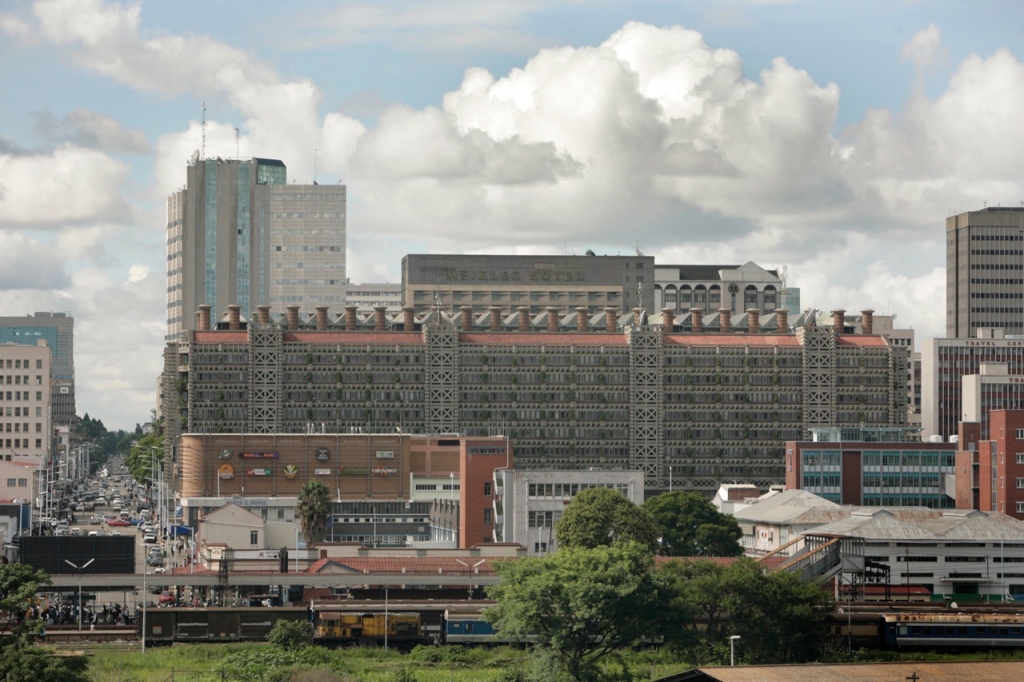
The National Railways of Zimbabwe, formerly Rhodesia Railways, is a state-owned company in Zimbabwe that operates the country’s national railway system. It is headquartered in the city of Bulawayo. In addition to the headquarters, it has a commercial-administrative center in Harare and a supply centre in Gweru. The Zimbabwean railway system was largely constructed during the time of 20th Century. The National Railways of Zimbabwe operates a daily overnight passenger train service that runs from Harare to Mutare and another one from Harare to Bulawayo, using the Beira–Bulawayo railway. The NRZ has also suffered from the general decline of the country’s economy. Neglect of maintenance, lacking spare parts and overdue replacement of equipment have led to a situation were only part of the railway net is in good condition and equipment problems have led to reduced service. Steam locomotives have been reintroduced since 2004 as coal is in relatively good supply, while diesel must be imported and electricity shortages are common. Further, the company is seriously indebted, making it impossible to solve this situation without external help. Goods transport has declined, from 18 million tonnes in 1998 to 2 million tonnes in 2010. NRZ operates about 2,600 miles of railway lines, all of 3 ft 6 in providing passenger and freight services. The gauge is standard for all of southern Africa. NRZ has an important transit function in the southern part of Africa and is well linked with neighboring countries: toward the north, at Victoria Falls the system links to the Zambia Railways, crossing the Victoria Falls Bridge. Toward the Indian ocean the system links to the Mozambique Ports and Railways, in Mozambique. A second line toward Mozambique reaches Maputo. To the west, a connecting line link ups to Botswana Railways to reach South Africa, eventually reaching Durban and Cape Town. A direct line to South Africa from Bulawayo was opened in 1999 by the Beitbridge Bulawayo Railway. The 194-mile Gweru-Harare section is electrified at 25 kV AC. The section was extensively vandalised and the copper cables stolen. The line is no longer functional. Steam locomotives are still used in Zimbabwe; they have proven so popular with tourists that there are plans to refurbish several more steam locomotives. However, funding is constrained, and diesel-hauled freight transport is a higher priority.
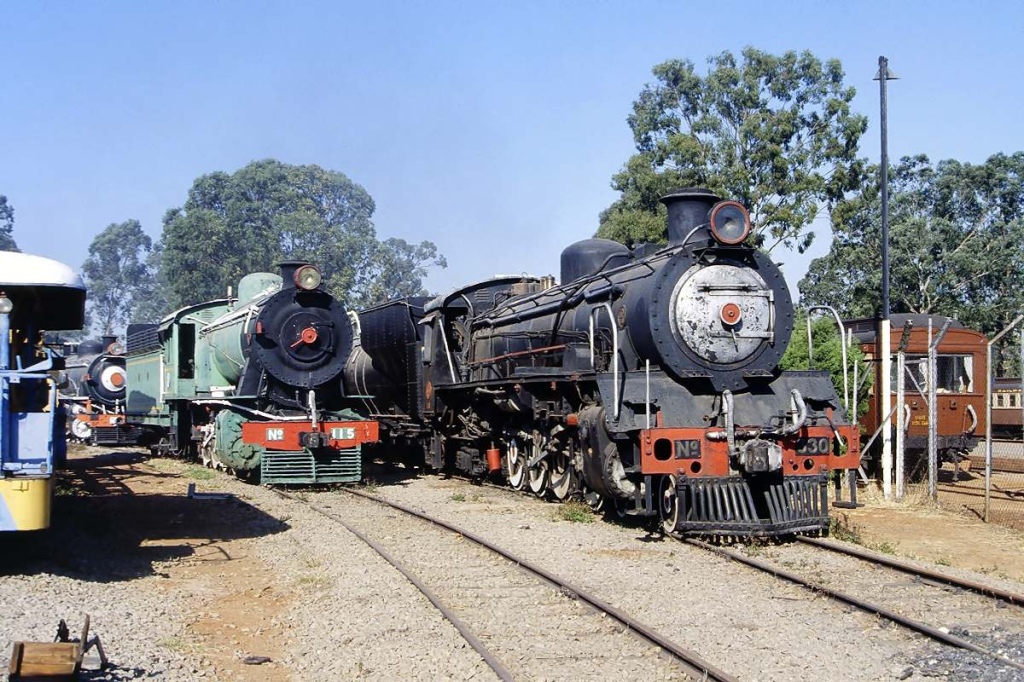
Great Zimbabwe is a medieval city near Lake Mutirikwi and the town of Masvingo. It is thought to have been the capital of a great kingdom during the country’s Late Iron Age about which little is known. Construction on the city began in the 9th century and continued until it was abandoned in the 15th century. The edifices are believed to have been erected by the ancestral Shona. The stone city spans an area of 2.79 square miles and could have housed up to 18,000 people at its peak, giving it a population density of approximately 2,500 per square kilometre. It is recognised as a World Heritage Site by UNESCO. Great Zimbabwe is believed to have served as a royal palace for the local monarch. As such, it would have been used as the seat of political power. Among the edifice’s most prominent features were its walls, some of which are eleven metres high. Construction of the stone buildings started in the 11th century and continued for over 300 years. The ruins at Great Zimbabwe are some of the oldest and largest structures located in Southern Africa, and are the second oldest after nearby Mapungubwe in South Africa. Its most formidable edifice, commonly referred to as the Great Enclosure, has walls as high as 11m extending approximately 250m. David Beach believes that the city and its proposed state, the Kingdom of Zimbabwe, flourished from 1200 to 1500, although a somewhat earlier date for its demise is implied by a description transmitted in the early 1500s to João de Barros. Its growth has been linked to the decline of Mapungubwe from around 1300, due to climatic change or the greater availability of gold in the hinterland of Great Zimbabwe. Traditional estimates are that Great Zimbabwe had as many as 18,000 inhabitants at its peak. However, a more recent survey concluded that the population likely never exceeded 10,000. The ruins that survive are built entirely of stone; they span 1,800 acres. The ruins form three distinct architectural groups. They are known as the Hill Complex, the Valley Complex and the Great Enclosure. The Hill Complex is the oldest, and was occupied from the 9th to 13th centuries. The Great Enclosure was occupied from the 13th to 15th centuries, and the Valley Complex from the 14th to 16th centuries. Notable features of the Hill Complex include the Eastern Enclosure, in which it is thought the Zimbabwe Birds stood, a high balcony enclosure overlooking the Eastern Enclosure, and a huge boulder in a shape similar to that of the Zimbabwe Bird. The Great Enclosure is composed of an inner wall, encircling a series of structures and a younger outer wall. The Conical Tower, 5.5m in diameter and 9m high, was constructed between the two walls. The Valley Complex is divided into the Upper and Lower Valley Ruins, with different periods of occupation. The most important artefacts recovered from the Monument are the eight Zimbabwe Birds. These were carved from a micaceous schist on the tops of monoliths the height of a person. Slots in a platform in the Eastern Enclosure of the Hill Complex appear designed to hold the monoliths with the Zimbabwe birds, but as they were not found in situ it cannot be determined which monolith and bird were where. Other artefacts include soapstone figurines, pottery, iron gongs, elaborately worked ivory, iron and copper wire, iron hoes, bronze spearheads, copper ingots and crucibles, and gold beads, bracelets, pendants and sheaths. Glass beads and porcelain from China and Persia among other foreign artefacts were also found, attesting the international trade linkages of the Kingdom. In the extensive stone ruins of the great city, which still remain today, include eight, monolithic birds carved in soapstone. It is thought that they represent the bateleur eagle – a good omen, protective spirit and messenger of the gods in Shona culture. The causes for the decline and ultimate abandonment of the site around 1450 have been suggested as due to a decline in trade compared to sites further north, the exhaustion of the gold mines, political instability and famine and water shortages induced by climatic change. The Mutapa state arose in the 15th century from the northward expansion of the Great Zimbabwe tradition, having been founded by Nyatsimba Mutota from Great Zimbabwe after he was sent to find new sources of salt in the north; (this supports the belief that Great Zimbabwe’s decline was due to a shortage of resources). Great Zimbabwe also predates the Khami and Nyanga cultures.
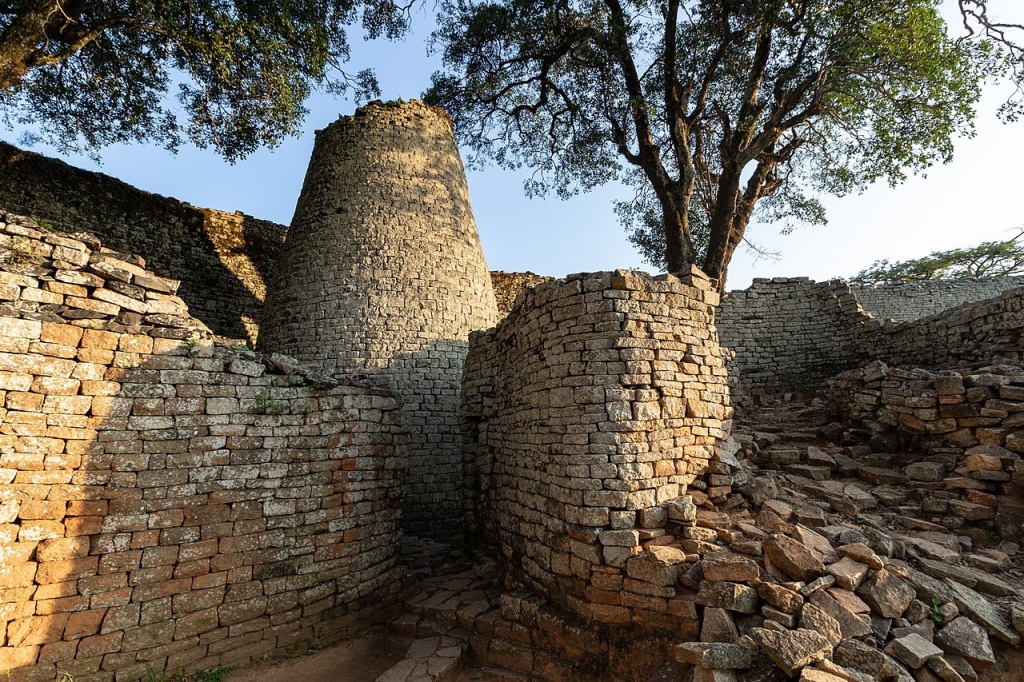
Sorry it has been a couple of months since my last offering, i’ve had a lot going on and writing this blog hasn’t been high on the priority list. Hopefully that has now changed as things seem to be sorting themselves out. I will go into everything on more detail when I can, for now though I just need to sit back, relax and get back to a bit of normality.
